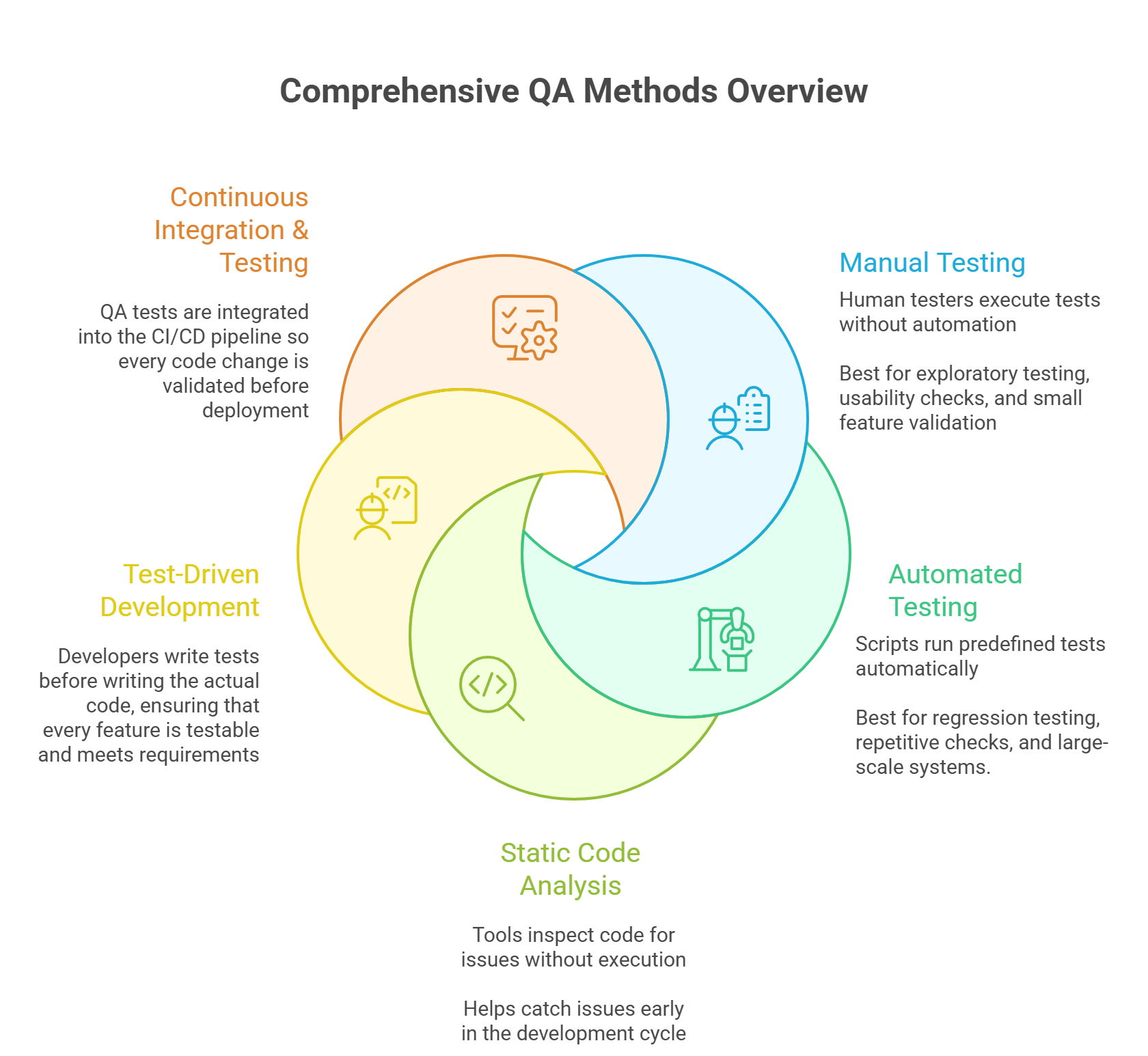Home » What is Quality Assurance?
Jinn
Content Writer · 8 min read · Aug 15, 2025
In software development and product delivery, Quality Assurance (QA) is the invisible safety net that ensures products meet expectations before they reach the customer. It’s not just about finding bugs — it’s about building confidence, preventing defects, and improving processes so issues are less likely to happen in the first place
In the Information Technology (IT) industry, Quality Assurance (QA) is a proactive, process-oriented discipline dedicated to ensuring that software products and services are developed and delivered to meet predefined quality standards, user requirements, and business objectives. It’s about building quality into the product from the very beginning of the development lifecycle
The fundamental principle of QA is that quality cannot be tested into a product at the end of development; it must be built into it throughout the entire process. While Quality Control (QC) is reactive—finding bugs in the finished code—QA is proactive—preventing those bugs from being created in the first place.
QA (Quality Assurance) = Process-oriented and Preventative.
Focus: Improving and standardizing development processes, methodologies, and tools.
Goal: Prevent defects by establishing robust procedures, conducting reviews, and ensuring best practices are followed.
Analogy: Creating a recipe, training the chefs, and ensuring a clean kitchen to prevent a bad meal.
QC (Quality Control) = Product-oriented and Detective.
Focus: Identifying defects in the finished product (e.g., the working software).
Goal: Find and fix bugs through activities like manual testing, automated testing, and user acceptance testing (UAT).
Analogy: Tasting the food before it leaves the kitchen to check if it’s good.

Implementing QA processes delivers long-term advantages:
Prevents costly defects — fixing bugs early is far cheaper than in production
Improves user satisfaction — fewer crashes, smoother experiences
Builds trust — reliable products strengthen customer confidence
Increases efficiency — streamlined testing reduces release delays
Supports compliance — meets industry regulations and standards
Implementing QA offers several advantages:
A QA process usually involves several key roles:
QA Engineer / Tester – Executes manual or automated tests, reports issues
QA Automation Engineer – Designs, develops, and maintains automated test scripts
QA Lead / Manager – Defines test strategy, coordinates QA activities, ensures standards are met
SDET (Software Development Engineer in Test) – Bridges development and QA, often writing testable code and automation frameworks
Product Owner / Business Analyst – Ensures requirements are clearly defined and testable
Quality Assurance is more than a checkbox before release — it’s a culture of delivering reliable, user-friendly, and defect-free products. By combining preventive methods, clear communication, and continuous improvement, QA teams play a vital role in the success of any software project
Your Personal Debugging Jinn
Think of it like building a car. QA (Quality Assurance) is the process of designing the factory, training the assembly line workers, and setting quality checkpoints at every stage to ensure no faulty part is installed. QC (Quality Control) is the final inspection at the end of the line where they test the brakes, lights, and engine to find any defects before the car is shipped. QA is about preventing defects in the process; QC is about finding defects in the product
Quite the opposite. Integrating QA principles is essential for agile teams to move fast *sustainably*. Without it, technical debt and buggy releases will eventually slow you to a crawl. QA in agile isn’t about bulky documentation; it’s about “shifting left”—involving QA mindsets early in the process (e.g., in sprint planning), writing testable user stories, and automating tests. This prevents costly late-stage bug fixes and ensures your rapid releases are also high-quality
On day one. QA should be involved from the very beginning, during the requirements gathering and design phase. By reviewing requirements for clarity, completeness, and testability, QA helps prevent ambiguities that lead to defects later. The earlier a flaw is found, the cheaper it is to fix
Not entirely. They serve different purposes. Automated testin* is perfect for repetitive, time-consuming tasks like regression testing, performance testing, and running large test suites quickly. Manual testing is essential for exploring usability, assessing the user experience, ad-hoc testing, and verifying things that are difficult to automate, like visual appeal or complex user workflows. A robust QA strategy uses both in harmony
Save Time, Boost Productivity
Share
Get Early Access to Jinn
Sign up now to join our waitlist and enjoy free early access as soon as we launch.
Sign up today and be a part of the future of QA.
With Djinn, bugs are understood instantly, and fixes come faster
Product
Company
Policies
Support
© 2025 All Rights Reserved
Get Early Access to Djinn
Sign up now to join our waitlist and enjoy free early access as soon as we launch.
Sign up today and be a part of the future of QA.